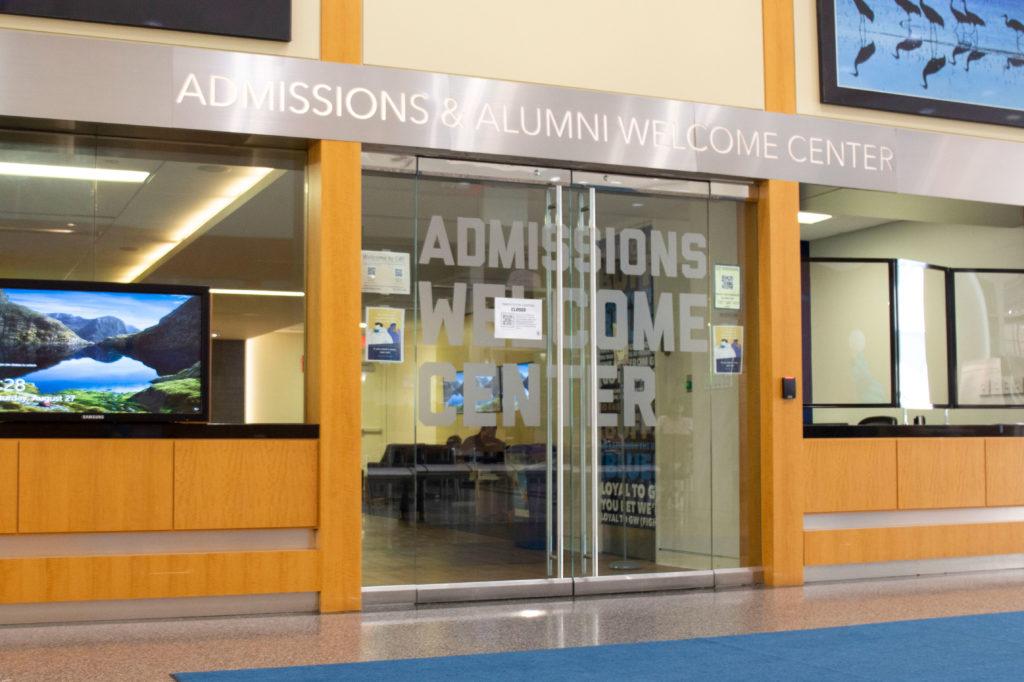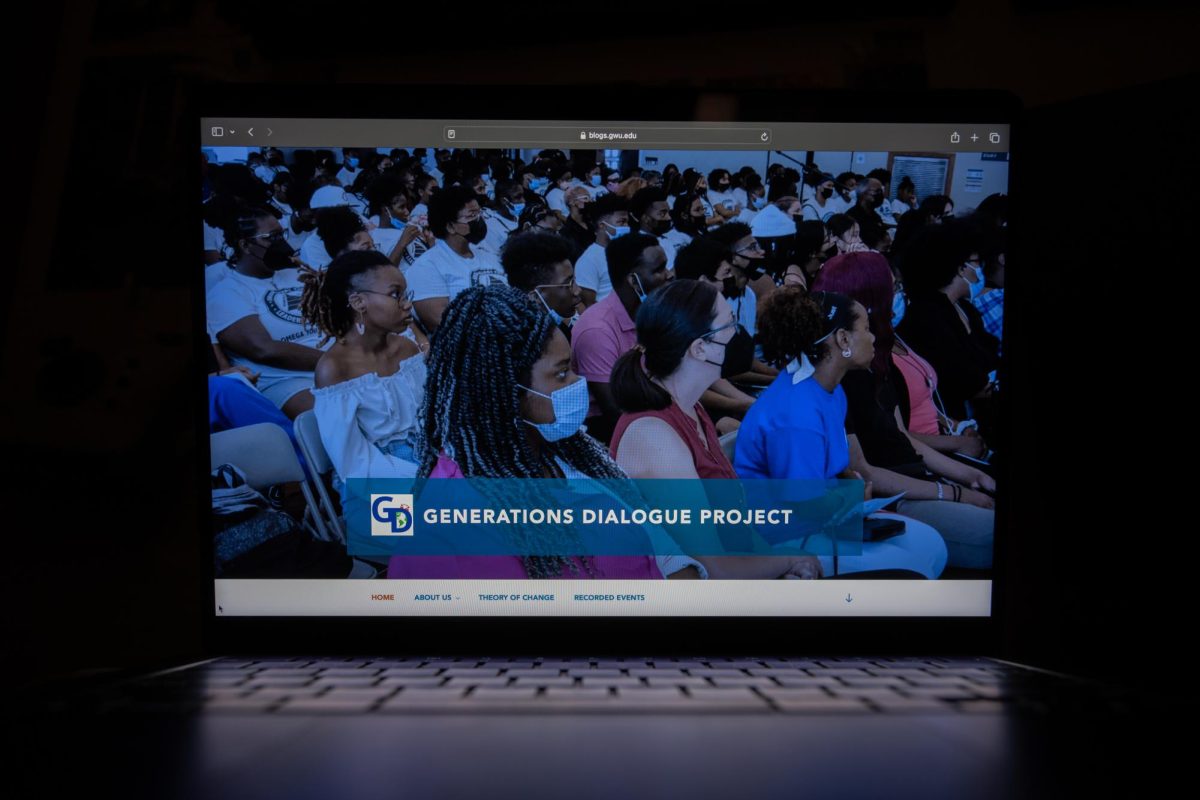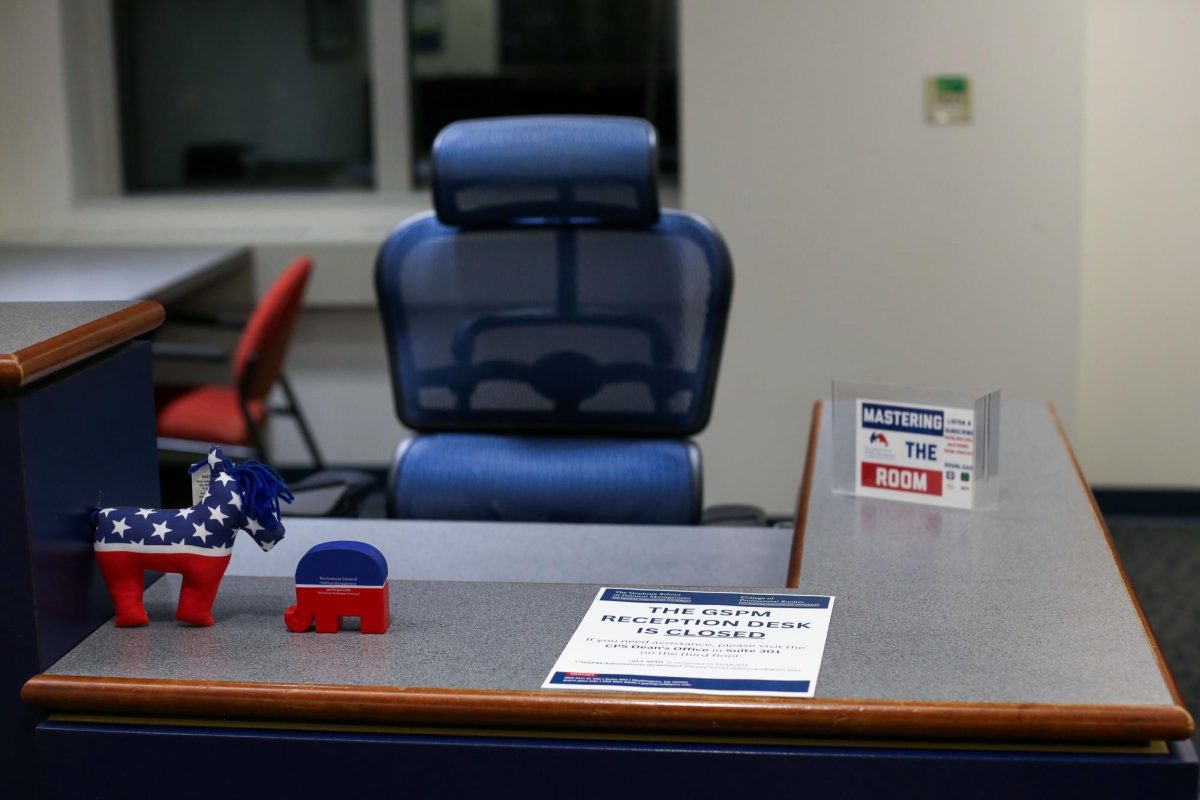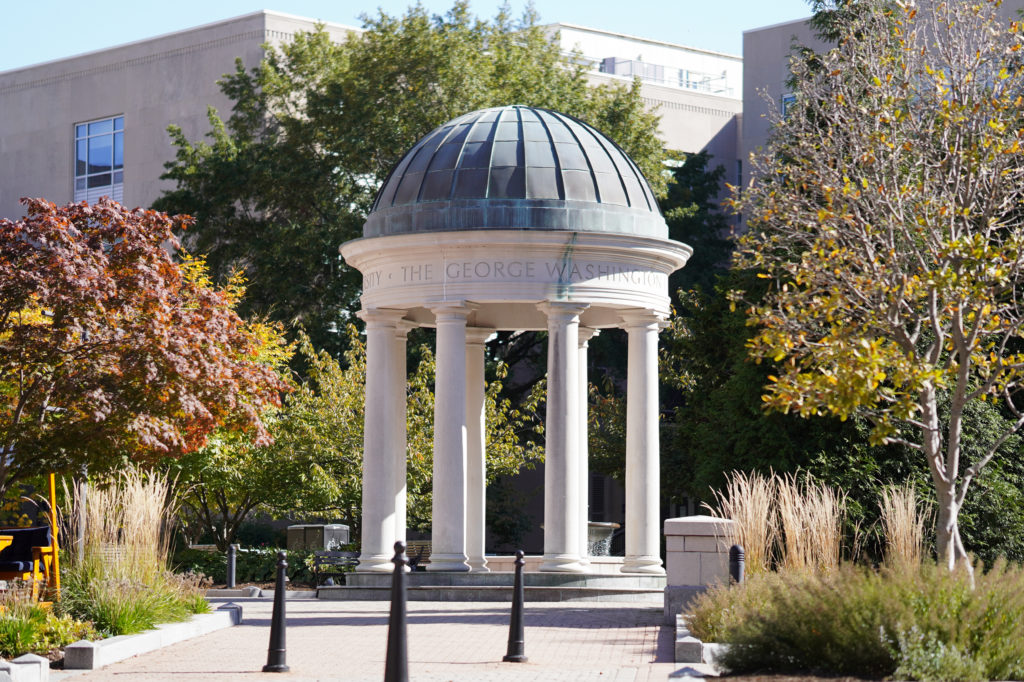The number of students enrolled at GW has continued to fall this school year as part of a four-year decline, a report the Faculty Senate revealed Friday.
Jay Goff, the vice provost for enrollment and student success, said 25,939 total undergraduate and graduate students are enrolled this semester, a roughly two percent decrease from last fall when officials tallied 26,457 students. Goff said the dip comes as officials enlisted the largest class of new students since 2018, with 2,985 freshmen and transfer students.
Goff said the number of underrepresented minority freshmen who identify as Black, Latino and Indigenous rose from 530 last fall to 642 this semester, while the number of first-generation and Pell Grant recipients rose during the same span by more than 50 and 60 students, respectively. He said while international freshman enrollment is on the rise, officials are still working to elevate international enrollment levels after they faltered under the impact of the COVID-19 pandemic, with 150 fewer international freshmen enrolled than in fall 2019.
“We’ve attracted one of the largest, most talented and diverse first-year classes in GW’s history,” Goff said.
Goff said 2,985 new students – including 2,941 freshmen and 44 transfer students – enrolled this semester, exceeding last fall’s new student enrollment by about 10 percent and surpassing officials’ goal by about five percent. He said officials aimed to enroll a larger number of students this academic year to offset the pandemic-related dip in GW’s enrollment numbers.
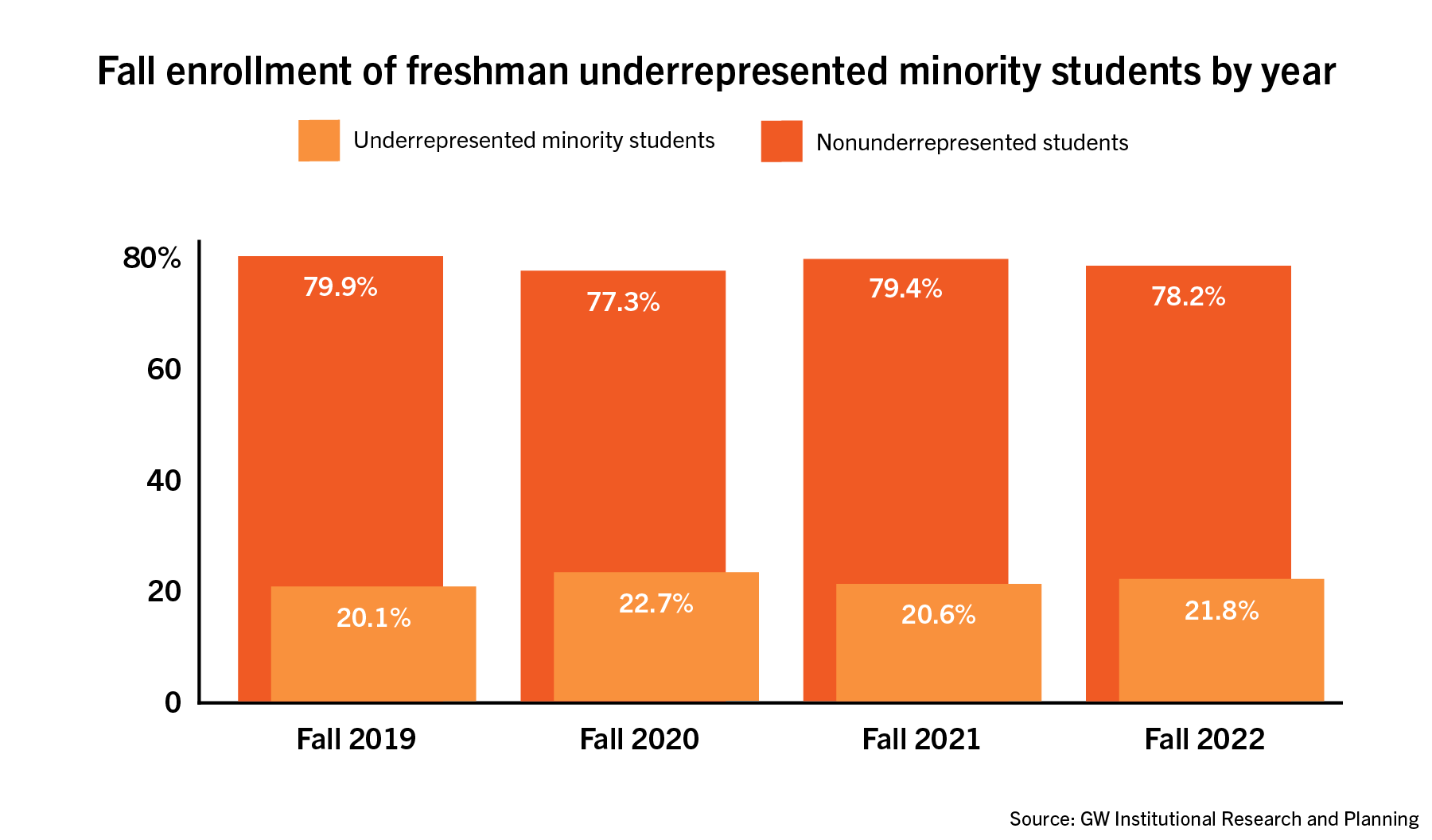
Nicholas Anastacio | Graphics Editor
The University’s acceptance rate rose from 43 percent to 49 percent between the 2020-21 and 2021-22 academic years, which officials said was the result of a decision to no longer shy away from admitting “higher-caliber applicants” out of the fear they might not enroll upon acceptance.
“The new undergraduate class has 2,985 students and slightly exceeded targets that were set this year,” he said. “This increase also helps us position the potential undergraduate class closer to new student intake levels of years prior to the pandemic.”
Goff said total University enrollment currently sits at 25,939 students – a two percent decrease from fall 2021 and about an eight percent decrease from fall 2018. He said the decrease is primarily the result of the pandemic’s negative financial impact on working adults, who are often the students enrolled in part-time degree programs, as there was a nine percent drop in total part-time enrollment between fall 2021 and fall 2022.
Goff said admissions staff recruited more students from the Midwest and Southeast regions of the country than in previous years to improve the geographic diversity of the new freshmen class. He said the University continues to struggle to recruit students from North Dakota, South Dakota and Wyoming, even though GW is attracting students from the surrounding states and Canada.
There are currently six students from Wyoming, six from North Dakota and seven from South Dakota enrolled in the University, according to institutional research data.
“We do have students from Canada, so we really have kind of a doughnut hole right in the middle in terms of our national, international reach,” he said.
Goff said officials plan to recruit more diverse and academically gifted students and improve the University’s affordability through ongoing scholarship initiatives for the 2023-24 academic year. He said they plan to revive enrollment levels among student populations that decreased during the pandemic, like working adults who enroll in part-time programs, and ensure their recruitment efforts fall in line with GW’s housing and education capacity.
“In staying with our pillars, what we’re going to be doing, specifically in terms of our desired student profile, is that we are not going to back off of the idea of academic excellence,” he said. “We will continue to use that as our primary focal point of trying to find the best, brightest, most dedicated students from throughout the country and the world and continue our trends in diversity and maintaining the affordability levels.”
Earlier in the Faculty Senate meeting, interim University President Mark Wrighton announced he will meet with members of the Board of Trustees this week to discuss the finances of the Medical Faculty Associates and ask what he can publicly share about its finances with the senate.
During a senate meeting last month, faculty senators said they were doubtful that officials would follow through on the plan for the MFA to break even by next June, as the health care nonprofit is currently $200 million in debt.
Susan Kulp, a faculty senator and the co-chair of the senate’s fiscal planning and budgeting committee, said the MFA’s leadership could improve their transparency with the senate by having quarterly check-ins with faculty senators about the MFA’s financial statements.
“I want you to be mindful that we’re in the midst of redeveloping the clinical practice for the school of medicine and people are working very hard,” Wrighton said.
David Diemert – the chair of GW’s Medical Advisory Group, the public health body that advises GW’s COVID-19 policies – also outlined the role of the MAG to the senate. He said the about 20-person group meets biweekly and makes recommendations to officials based on the group’s consensus.
Diemert said the MAG analyzes data from COVID-19 case rates on campus, in the GW Hospital, DC Health statistics and national pandemic trends.
“Our overriding concern has always been from the pandemic and remains to be the health of all students, faculty and staff in the GW community, as well as the health of the surrounding community,” he said.


